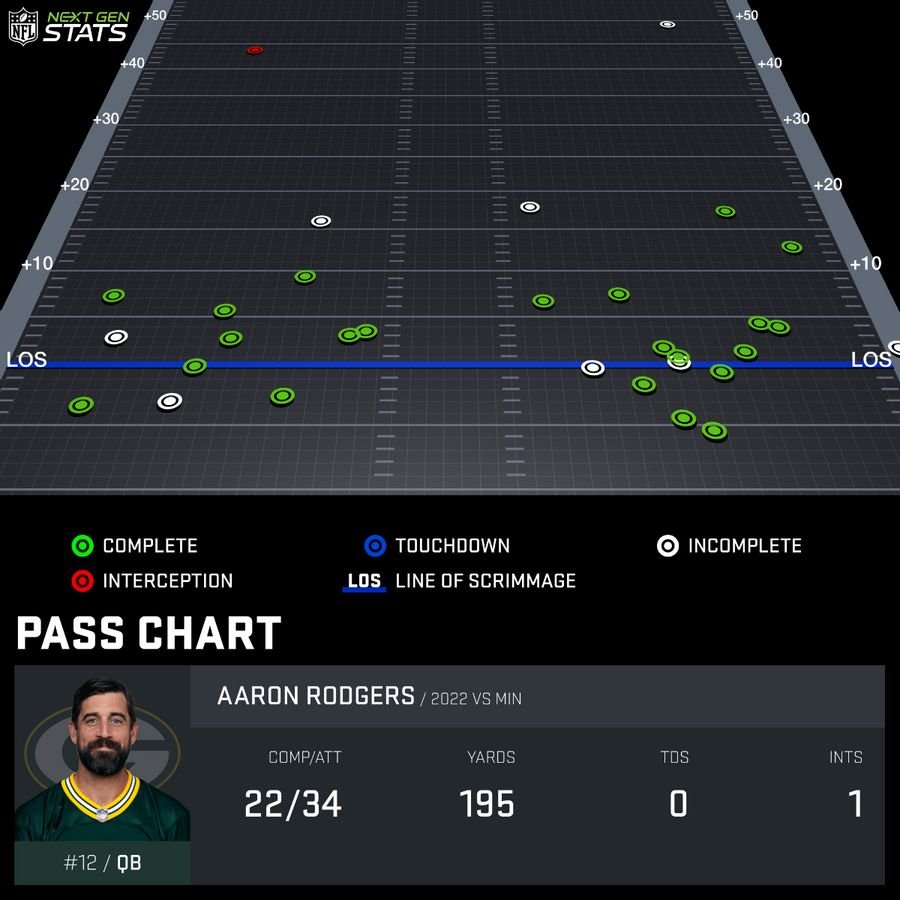Aaron Rodgers Can't Hold Back Because of Rookie Missteps
“Shooters shoot” is one of my favorite truisms in sports. It’s rooted in basketball, but I think it applies far beyond the hardwood. Half folksy wisdom and half analytics, it comes up when a gifted scorer goes through a bit of a rough patch. The star guard suddenly can’t hit the ocean from the beach, but shooters shoot, so he’ll keep firing. And he does, and eventually, the shots start falling again. Shooters shoot, baby.
The old-school peddlers of this kind of quote say it because of some vague “you have to work through it” sentiment, which could be true. But it’s probably more accurate to just point to the numbers at work behind what appears to be a cold streak. A player who’s a career 40% shooter from three-point distance who’s in the midst of a string of games where he’s only shooting 20% hasn’t just become a bad shooter all of a sudden. He’s just in the midst of a low point in the overall tapestry of his career. He’ll just as likely go through a hot streak where he’s hitting 60% of his three-pointers, and pretty soon all will be right in the world.
I say all this because whatever the football equivalent of “shooters shoot” is, we basically saw the opposite of it on Sunday.
If deep shots are the NFL equivalent of three-pointers in basketball, Aaron Rodgers opened the game with a brick so solid it could be the cornerstone for a skyscraper, and it wasn’t even his fault. Rodgers’ bomb to Christian Watson couldn’t have been much better delivered if Rodgers had walked over and handed it to him, but Watson couldn’t complete the transaction and what could have been the most exciting opening play of a Packers’ season in recent history instead ended up as nothing more than an incomplete pass.
That was basically all we saw of the second-round pick until garbage time because Rodgers only took one deep shot for the rest of the game — an ill-advised heave to Randall Cobb that Harrison Smith had no trouble corralling. Other than that, Rodgers kept things short and risk-free, leading to one of the more uninspiring passing charts I’ve seen in a while.
With respect to the Packers’ offensive line issues that likely hampered future deep balls, I think this is the exact wrong approach for Rodgers.
The Packers’ wide receiver corps is, to put it mildly, a work in progress. Of their top five receivers (counting Allen Lazard, Sammy Watkins, Randall Cobb, Christian Watson, and Romeo Doubs as that group, only Lazard and Cobb have experience in Green Bay. Watkins, meanwhile, is the only other player in that group who had played an NFL snap that counted prior to Sunday.
The group is raw. But this group is also fast, and that’s why Rodgers can’t afford to stop firing. Things didn’t go well for the Packers on Sunday, but with Allen Lazard’s return uncertain and the rest of the Packers’ receiver room still figuring out how this all goes together, Rodgers needs to lean into what his group does well. He has to keep going deep, enduring the drops (and hits) that come with it until the rookies figure it out.
Rodgers has been here before. There were plenty of times during the Marquez Valdes-Scantling era where the Packers’ fastest receiver was also blessed with the least-reliable hands. Rodgers did keep going back to MVS, but he also had the benefit of having Davante Adams to reliably get the Packers yards in between those deep shots.
Now Rodgers doesn’t have that luxury, but as we saw on Sunday, going completely away from the deep ball isn’t going to solve anything. He and the team seem to have no choice but to keep dialing up the deep shots. We know Rodgers can hit the long ball, and he can’t let a couple of misfires get in his way.
Shooters shoot, and it’s time to keep shooting until the big plays start hitting.


